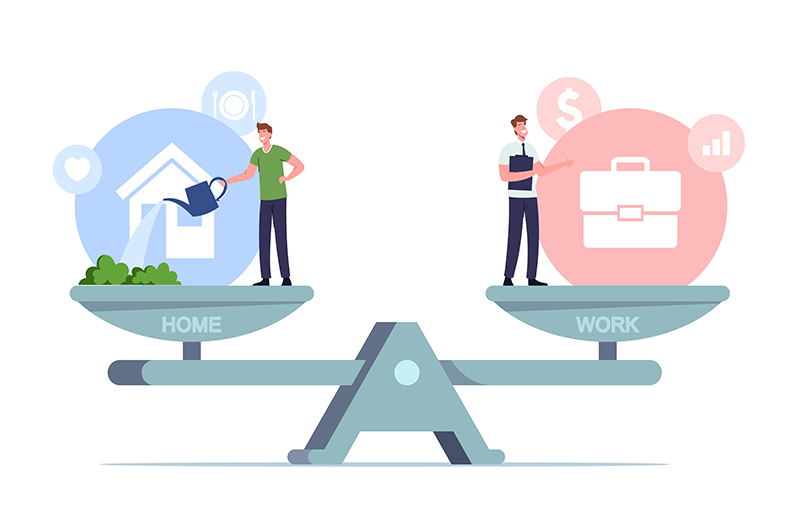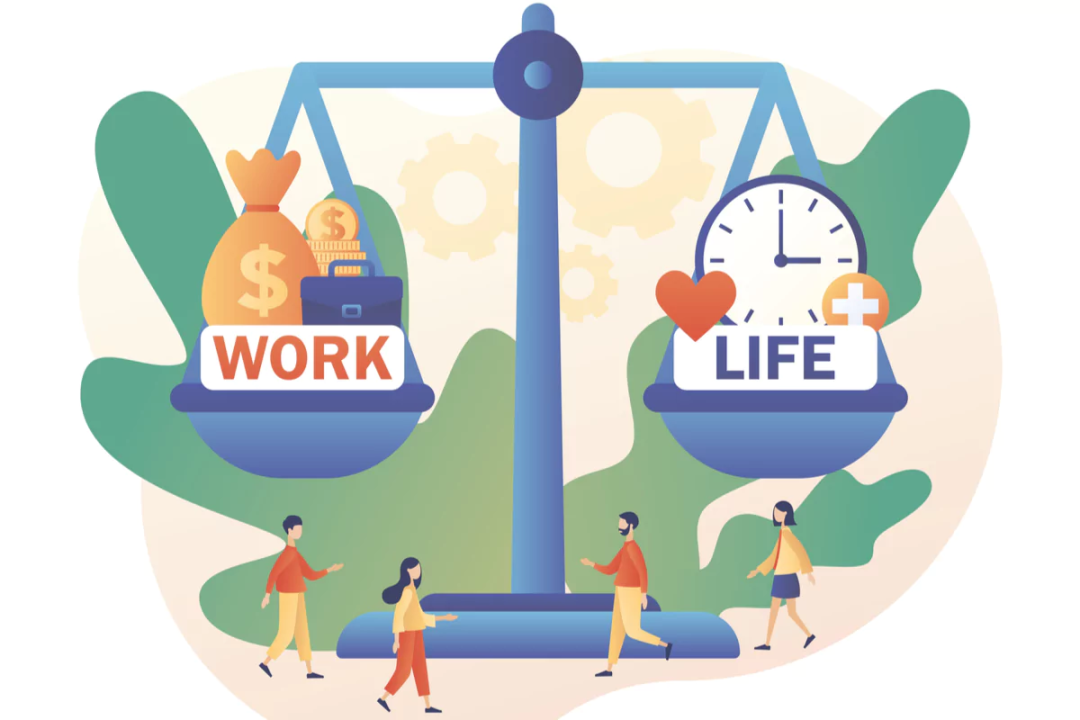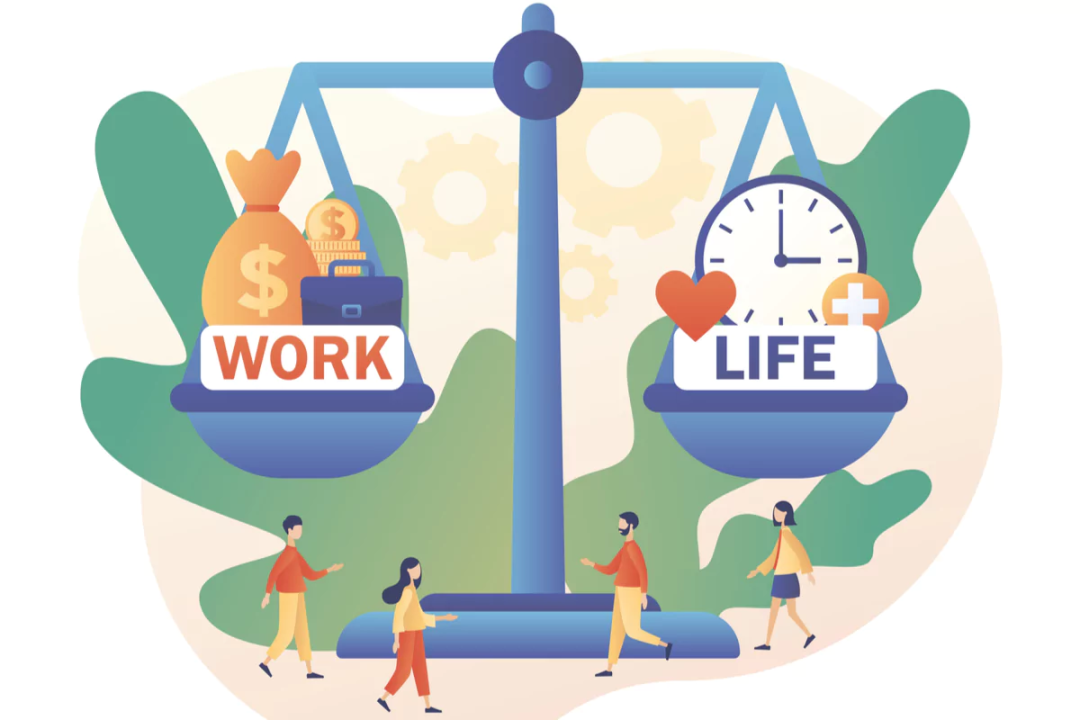Balancing Work and Personal Life: A Guide to Achieving Harmony
In the modern world, balancing work and personal life has become one of the greatest challenges for many professionals. With increasing workloads, the constant pressure to perform, and the ever-present digital connection, it’s easy to feel like there is no boundary between your job and personal time. However, finding that balance is essential for long-term happiness, health, and career success.
This article will explore practical strategies and actionable tips to help you achieve a healthy work-life balance. From setting boundaries to prioritizing self-care, we’ll cover everything you need to regain control of your time and energy.
Why Work-Life Balance is Important
Achieving a work-life balance is crucial for several reasons. It’s not just about dividing your time between work and personal life, but about maintaining mental, emotional, and physical well-being. Here are the top reasons why a work-life balance is essential:
1. Prevents Burnout
When work consumes all of your time and energy, it can lead to burnout. Burnout affects your productivity, mental health, and overall happiness. Achieving work-life balance ensures that you don’t overextend yourself, allowing time for rest and rejuvenation.
2. Improves Productivity
While it might seem counterintuitive, taking time for yourself can make you more productive. When you’re rested and feel balanced, your performance at work improves, leading to better results and greater satisfaction.
3. Enhances Personal Relationships
By making time for your personal life, you strengthen relationships with family and friends. This, in turn, provides you with emotional support, which can make a huge difference in how you handle work pressures.
4. Boosts Mental Health
Constant work-related stress can take a toll on your mental health. A good work-life balance gives you the opportunity to engage in hobbies, exercise, and other activities that can significantly improve your well-being.
5. Increases Job Satisfaction
When you have balance in your life, you feel more satisfied and fulfilled in both your personal and professional realms. This sense of satisfaction often leads to better motivation at work and a healthier attitude toward your job.

Key Strategies for Achieving Work-Life Balance
Balancing work and personal life is an ongoing process, and it requires commitment. Here are some effective strategies you can implement to start making that balance a reality:
1. Set Clear Boundaries
One of the most crucial steps to achieving balance is setting boundaries. Without clear boundaries, work can spill over into your personal time, leaving you feeling drained and overwhelmed.
- Set working hours: Decide on your working hours and stick to them. Communicate these boundaries to your colleagues and clients.
- Create a designated workspace: If you’re working from home, have a specific area where you work. This helps separate work from leisure.
- Turn off notifications: Outside of work hours, silence work-related notifications. This will help you disengage from work and be present in your personal life.
2. Prioritize Tasks
Not all tasks are equally important. Prioritizing helps you focus on what matters most and avoid wasting time on tasks that don’t align with your goals.
- Use the Eisenhower Matrix: Categorize your tasks into four quadrants—important and urgent, important but not urgent, urgent but not important, and neither urgent nor important. This will help you focus on the right activities.
- Delegate tasks: If possible, delegate tasks that can be handled by others. This allows you to focus on your key responsibilities while freeing up time for your personal life.
3. Take Regular Breaks
Working long hours without taking breaks can lead to fatigue and decreased productivity. Taking regular breaks throughout the day is essential for maintaining your energy and focus.
- Use the Pomodoro Technique: This technique involves working for 25 minutes, followed by a 5-minute break. After four sessions, take a longer break. This method can help you stay productive and prevent burnout.
- Stretch and move: Taking a short walk or stretching during your breaks can help relieve tension and improve circulation.

4. Learn to Say No
You don’t have to accept every request that comes your way. Saying no is an important skill for protecting your time and energy. Whether it’s an extra project at work or a social obligation, learn to assess whether it aligns with your priorities before committing.
- Politely decline: Saying no doesn’t have to be rude. Be polite but firm in your decision.
- Know your limits: Understand your capacity and don’t overextend yourself by agreeing to too many commitments.
5. Embrace Flexibility
Flexibility is one of the key benefits of balancing work and personal life. Having the ability to adjust your schedule when necessary helps you manage unforeseen circumstances without losing control of your work-life harmony.
- Remote work options: If possible, negotiate remote work options with your employer. Working from home offers more flexibility in managing personal commitments.
- Flexible hours: Some companies offer flexible working hours. If this is an option, consider adjusting your work hours to better fit your personal life.
6. Make Time for Self-Care
Self-care is essential for maintaining mental and physical health. Taking time for activities that nurture your body and mind helps you recharge and prevents burnout.
- Exercise regularly: Physical activity reduces stress and improves overall health. Find an exercise routine that works for you.
- Engage in hobbies: Hobbies like reading, painting, or cooking can be a great way to unwind and disconnect from work.
7. Use Technology to Your Advantage
There are many tools and apps available to help you manage your time more effectively. From task management tools to wellness apps, technology can streamline both your work and personal life.
- Task management apps: Tools like Trello, Asana, or Todoist can help you organize and prioritize tasks.
- Wellness apps: Apps like Headspace or Calm can help you incorporate mindfulness and meditation into your daily routine.

Common Challenges and Solutions for Balancing Work and Personal Life
1. Overwork and Lack of Time
One of the most common challenges people face is finding time for both work and personal life. Overwork can quickly lead to burnout and stress. To overcome this, implement strategies such as task prioritization, delegation, and flexible hours.
2. Feeling Guilty About Taking Breaks
Many professionals feel guilty about taking breaks, believing that they should be working constantly. However, taking breaks is crucial for maintaining productivity and preventing burnout. It’s important to reframe your mindset and recognize that breaks are necessary for long-term success.
3. Difficulty Disconnecting from Work
In today’s digital world, it’s harder than ever to disconnect from work. To manage this, set boundaries around your work hours and turn off notifications outside of work. Consider designating your phone to specific tasks, such as work communication during the workday and personal use afterward.
Frequently Asked Questions (FAQs)
1. How can I find a balance between work and personal life?
To find balance, it’s important to set boundaries, prioritize your tasks, take regular breaks, and make time for self-care. Consider implementing strategies like task delegation and flexible working hours to reduce stress and improve your overall well-being.
2. What are some tools I can use to improve my work-life balance?
Several tools can help you manage your time better, including Trello, Asana, Google Calendar, and wellness apps like Headspace. These tools help you organize your tasks, manage deadlines, and stay mindful of your health.
3. How do I avoid burnout while working from home?
To avoid burnout while working from home, establish a designated workspace, set clear working hours, take regular breaks, and prioritize tasks. Make sure to engage in self-care activities and spend time away from your workspace after work hours.
4. Can I balance work and family life?
Yes, balancing work and family life is possible with good time management. Prioritize family time, set clear boundaries with work, and use flexibility in your work schedule when possible. Delegate tasks at work or home to maintain balance.
5. What are the signs that I need to improve my work-life balance?
Signs that you need to improve your work-life balance include feeling consistently stressed, experiencing fatigue, neglecting personal relationships, and struggling with productivity. If you notice these signs, it’s time to reassess your approach and implement strategies to regain balance.
Conclusion
Achieving work-life balance is not a one-size-fits-all approach,
but by implementing the strategies outlined in this article, you can start making meaningful changes in your life. Set boundaries, prioritize tasks, and take time for self-care. Remember, the goal is not to divide your time equally between work and personal life, but to create a schedule that allows you to thrive in both areas.
By taking control of your time and balancing your work with your personal life, you’ll not only improve your productivity but also enjoy better mental health and more fulfilling relationships. Start today and experience the positive impact of a well-balanced life!


